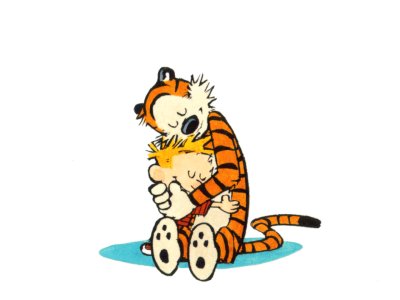Jason Rohrer's games lack about as much detail as is possible before loosing the forms into obscurity. They are still quite specifically representative though.
 Is it necessary to have specific references? Rod Humble's The Marriage has the most basic forms possible - squares and circles. Using colour and transparency to convey further meaning.
Is it necessary to have specific references? Rod Humble's The Marriage has the most basic forms possible - squares and circles. Using colour and transparency to convey further meaning.But what about the Fine Arts? Let's have a look at artist's ways of representing things.
 Impressionism
ImpressionismImpressionism was a move away from realism, and used the strength of brush strokes to convey forms - arguably conveying the mood better than a realistic image.
Expressionism
 "An Expressionist wishes, above all, to express himself... (an Expressionist rejects) immediate perception and builds on more complex psychic structures... Impressions and mental images that pass through mental peoples soul as through a filter which rids them of all substantial accretions to produce their clear essence [...and] are assimilated and condense into more general forms, into types, which he transcribes through simple short-hand formulae and symbols." (Gordon, 1987) (From Wiki)
"An Expressionist wishes, above all, to express himself... (an Expressionist rejects) immediate perception and builds on more complex psychic structures... Impressions and mental images that pass through mental peoples soul as through a filter which rids them of all substantial accretions to produce their clear essence [...and] are assimilated and condense into more general forms, into types, which he transcribes through simple short-hand formulae and symbols." (Gordon, 1987) (From Wiki)Abstract Art
Abstract art has the intention of abstracting forms to their most basic - while still containing their meaning. Mondrian worked with the tensions between geometric forms and bold, primary colours. Pollock succeed in taking his expression and putting it directly onto the canvas, his movements and intentions are recorded right onto the frame.
Animation/Cartoons

 Cartoons are simplified forms. Originally simply because a detailed character takes too long to animate. But as Scott McLeod argues, the more simplified a face is the easier it is for people to project their own impression onto it.
Cartoons are simplified forms. Originally simply because a detailed character takes too long to animate. But as Scott McLeod argues, the more simplified a face is the easier it is for people to project their own impression onto it.



No comments:
Post a Comment